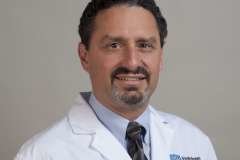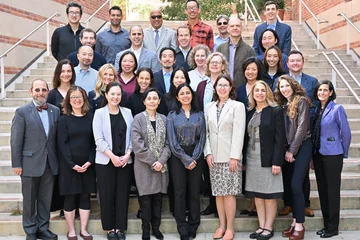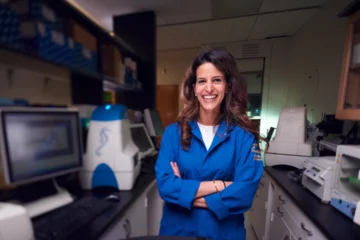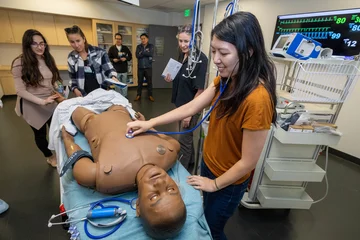A Day in the Life of Dr. Michael Sopher, Cardiothoracic Anesthesiologist
What does an anesthesiologist do? Michael Sopher, MD compares the work of an anesthesiologist to that of an airplane pilot: “Even though our work typically goes smoothly, we must prepare for a huge variety of adverse events," he says. "Each one can be extremely rare but of critical importance."
A clinical professor of cardiothoracic anesthesiology and vice chair of anesthesia clinical services at the David Geffen School of Medicine at UCLA (DGSOM), Dr. Sopher picked his career by first choosing between acute and chronic care. After that, he narrowed his options to emergency medicine, intensive care medicine and anesthesiology. "I liked the idea of seeing patients on an acute basis for a short period," he says. "It felt more on the edge, which suited my personality."
When it comes to guiding medical students, he finds that the initial career question still applies: acute care or chronic care? "Once you make that choice, you'll find many attractive specialties of each type. Ask yourself if you want to work in a clinic setting and develop long-term patient relationships," he says. "Or maybe you would prefer high-pressure, short-term patient interactions. They're both very legitimate paths."
A Day in the Operating Room

A typical day in the operating room actually starts the day before a surgery, when Dr. Sopher reviews the next day's cases with a resident. "Then I'll often call patients the night before to reinforce instructions and answer questions," he says.
He arrives at the hospital by 7 am on surgery days to assess patients and obtain consent for anesthesia. Dr. Sopher works with pediatric patients, so he also spends time prepping and gowning patients’ parents for the operating room (OR).
Once the patient is unconscious, Dr. Sopher says, the anesthesiologist manages blood pressure, heart rate and response to surgery. "We also protect them from trauma by lubricating and taping their eyes and positioning their arms and legs appropriately," he says. "A lot goes into keeping the patient stable."
Operating days run until about 5:30 pm. "As soon as each patient is in recovery, we come back to the OR and set up for the next case," Dr. Sopher says. "It's very fast-paced."
Intense situations bring the specialty's best and worst moments. "We often deal with very sick patients who are literally on the edge of life and death, and that is both rewarding and difficult," he says. "On the other hand, I think many anesthesiologists would be bored in a job that was not so high-intensity. Many of us say we hate the stress, but secretly love it."
Many Career Paths
Anesthesia now focuses more on the perioperative environment than ever before, says Dr. Sopher. "At UCLA, we do 30 percent of our total cases outside the OR, including cardiac catheterization, interventional radiology and GI procedures like ERCP, endoscopy and colonoscopy," he says. "When I first started we worked nearly exclusively in the OR. Today's perioperative focus increases patient safety and keeps things interesting for us."
In the broad spectrum of anesthesia, operative care is just one of many career paths.
"From the clinical work of chronic pain management to being in the labor and delivery room to care for mothers and neonates, we can do it all," he says. "What all these roles have is that patients are in difficult circumstances and we are able to bring them through."




